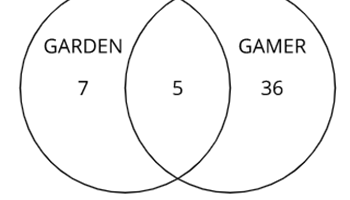Planning tool
Year levels
Strands
Expected level of development
Australian Curriculum Mathematics V9: AC9M9P01
Numeracy Progression: Understanding chance: P6
At this level, students are familiar with the language and concepts behind probability and possible outcomes. From here students focus their learning on using systematic approaches for various types of compound events before assigning probabilities to more complicated scenarios.
Students should use tree diagrams, lists, arrays and tables to assign probabilities for two-step chance experiments with and without replacement. Demonstrate to students the differences between these two variations, using a bag of marbles or a pack of cards. For the experiment without replacement, ensure that students are shown that the sample size reduces for the subsequent event and that it is dependent on the first event. Students can draw a tree diagram or create a list, array or table on which to record results. This enables students to assign the correct probabilities.
You may wish to introduce a third step or multiple steps. Encourage students to continue to use a systematic approach: identify the conditions of the experiment, use diagrams to record results and assign probabilities.
Encourage students to know that probability is all around them; consider using examples from the real world to create compound event examples. Use very large data sets from the Bureau of Meteorology, the Australian Bureau of Statistics or tables of results from Athletics Australia, for instance, to engage the students and so they can make connections to the real world.
Teaching and learning summary:
- Revise and extend vocabulary and skills on probability for two-step chance experiments with and without replacement.
- Ensure students work in a systematic manner using lists, tables, arrays or tree diagrams, before assigning probabilities.
- Extend students with three-stage events and highlight the need to use a systematic approach to assign probabilities.
- Use correct notation when teaching explicitly.
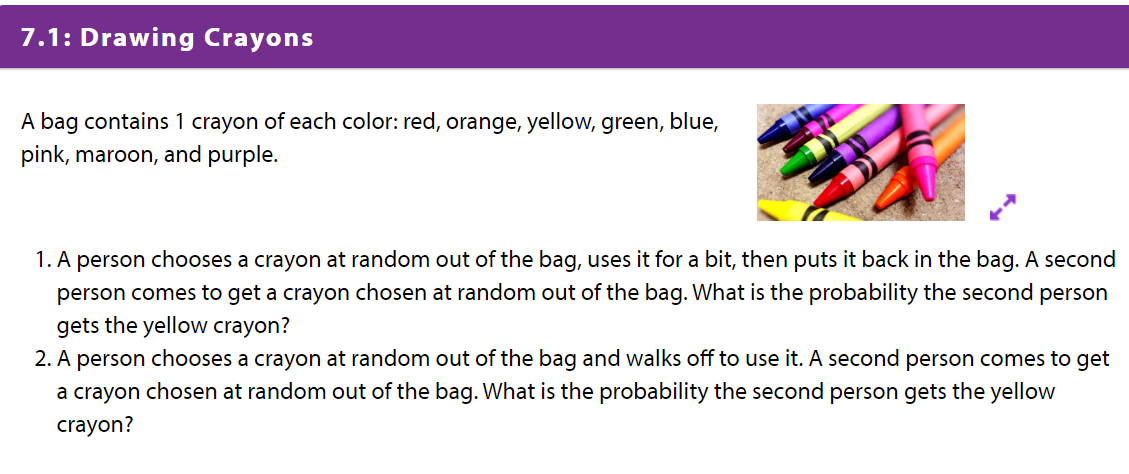
Students:
- extend vocabulary and skills on probability for two-step chance experiments with and without replacement
- work in a systematic manner using tree diagrams, lists, arrays or tables to assign probabilities correctly
- attempt and assign probabilities to three-stage events
- use notation correctly.
Some students may:
- learn the rules of probability and perform well in tests, yet still demonstrate misconceptions in probability from year to year. It is important to ensure that students are given the opportunities to gain deeper understanding so that it leaves a sustained impression. It is advised to not only teach correct rules, formulas and procedures, but to demonstrate the common biases that lead to incorrect decisions for different and more complicated scenarios. Be aware of the following common biases:
- equiprobability bias: the tendency to give equal probabilities for any chance event regardless of the actual probability. (For example, students may give equal probability to a two-event chance experiment without replacement.)
- representativeness: the tendency to assign likelihood or judgement to an event based on what came before. (For example, results of a coin-toss experiment revealed THTHTH, so the student might think that the next event will be T.)
- outcome orientation: treating the probability of a single outcome or non-occurrence of an event as an affirmation of certainty rather than considering the event as part of a likelihood of many events.
The Learning from home activities are designed to be used flexibly by teachers, parents and carers, as well as the students themselves. They can be used in a number of ways including to consolidate and extend learning done at school or for home schooling.
Learning intention
- I am learning about data sets for stepped chance problems without replacement.
- I am learning how to assign probabilities to a real-world scenario.
Why are we learning about this?
Sometimes there are fun reasons for knowing about chance and probability. How would you feel if you won first prize at a local raffle? Do you know your chances of winning? Would you buy the tickets if you knew your chances?
What to do
There is a raffle to raise money for the local footy club and a group of players is selling tickets at the game. You buy five tickets for $20 and feel good about helping out the community team. You are told the raffle for first, second and third prizes will be held after the game. You wait around so you can see if you have won any of the draws.
The time comes and the administrator of the club tells the audience that 200 tickets were sold altogether (the biggest sales yet!). Now that you know how many tickets were sold, you quickly draw a tree diagram on a napkin and think about your chances of winning one of the prizes. You wait nervously for the first prize to be drawn – a night’s accommodation at the beach!
1. What does your tree diagram look like?
2. What is the probability that you will win first prize?
You don’t win but are confident that you might win second prize – a $100 gift voucher for the local sports store.
3. What probability did you assign yourself for winning second prize?
You don’t win. One more chance!
You consult your diagram.
The third prize is about to be drawn – a meat tray! It’s not the prize you wished for but it’s always nice to win something.
4. What is the probability of winning third prize?
Success criteria
- I can confidently assign probabilities to a three-step chance problem without replacement.
- I can assign probabilities in relation to a real-world scenario.
Please note: This site contains links to websites not controlled by the Australian Government or ESA. More information here.
Teaching strategies
A collection of evidence-based teaching strategies applicable to this topic. Note we have not included an exhaustive list and acknowledge that some strategies such as differentiation apply to all topics. The selected teaching strategies are suggested as particularly relevant, however you may decide to include other strategies as well.
-

Collaborative learning
For group work to be effective students need to be taught explicitly how to work together in different settings, such as pairs or larger groups, and they need to practise these skills.
Go to resource -

Mathematics investigation
By giving students meaningful problems to solve they are engaged and can apply their learning, thereby deepening their understanding.
Go to resource -

Explicit teaching
Explicit teaching is about making the learning intentions and success criteria clear, with the teacher using examples and working though problems, setting relevant learning tasks and checking student understanding and providing feedback.
Go to resource -

Concrete, Representational, Abstract (CRA)
The CRA model is a three-phased approach where students move from concrete or virtual manipulatives, to making visual representations and on to using symbolic notation.
Go to resource -

Worked examples
A worked example is not just a pre-worked question that is given to the students. There are several types of worked examples and ways of using them.
Go to resource
Teaching resources
A range of resources to support you to build your student's understanding of these concepts, their skills and procedures. The resources incorporate a variety of teaching strategies.
-

Egg roulette: Part 1
In this lesson students use a fun context to learn about probability without replacement.
Go to resource -

Egg roulette: Part 2
In this lesson, students explore simulations to address misconceptions related to probability with and without replacement.
Go to resource -
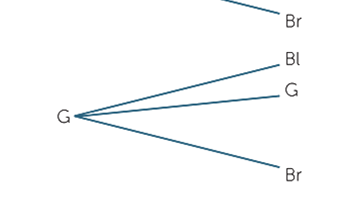
Chance
This resource comprises teacher notes, advice and examples of problems for the Year 9 cohort.
Go to resource -
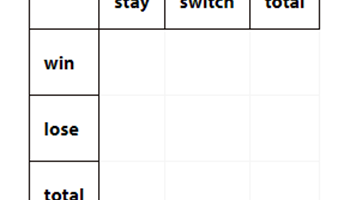
Related events
A good description of events that are related, including explanation, examples and key vocabulary.
Go to resource -
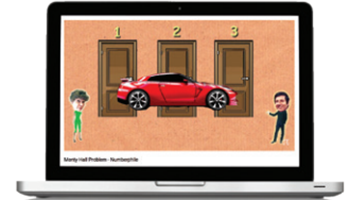
Chance: Year 9
Use this teaching guide to engage students with authentic contexts around making predictions and outcomes. Refer to pp. 7–11 for example problems for two-step chance experiments with and without replacement.
Go to resource
